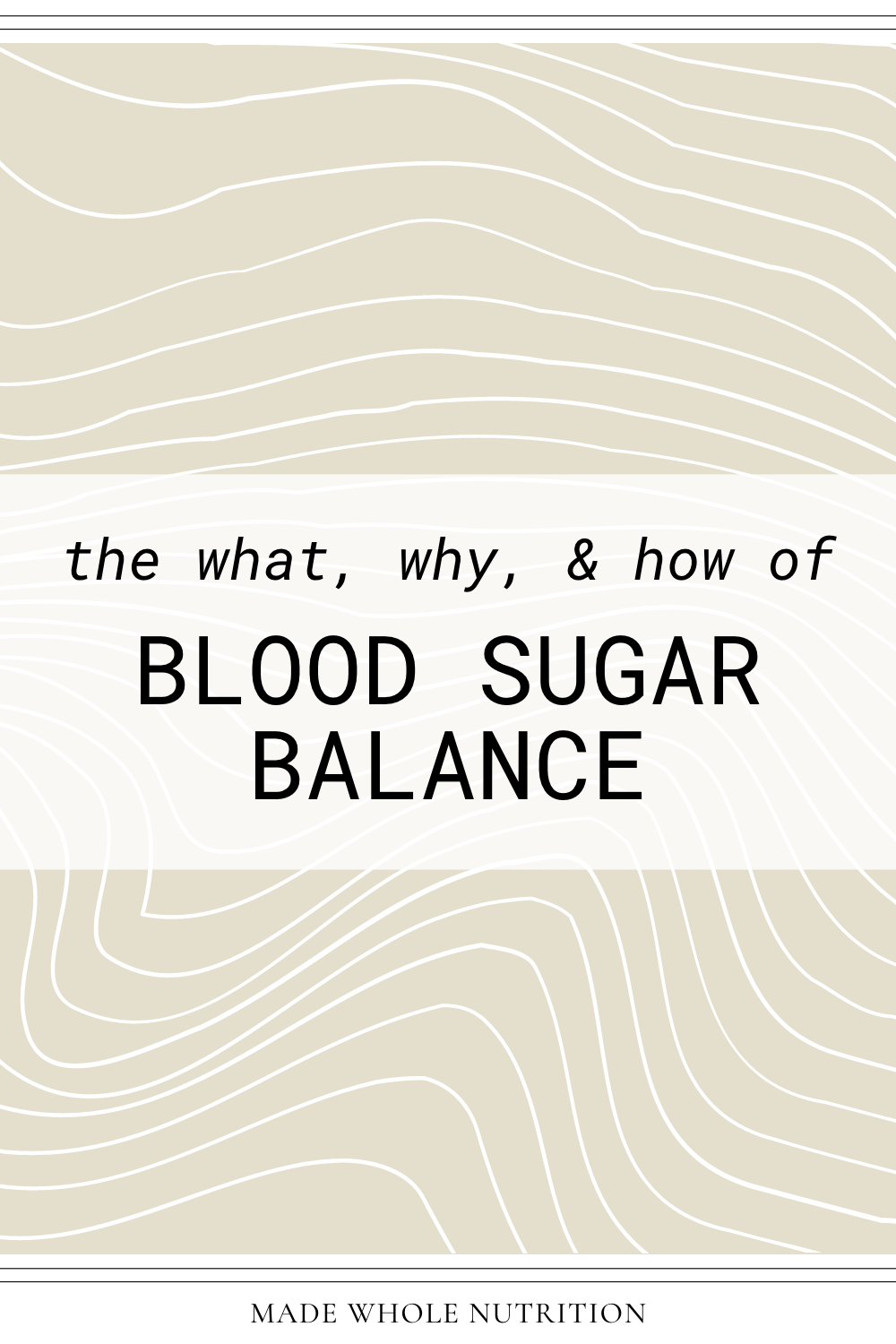The What, Why, & How of BLOOD SUGAR BALANCE
WHY IS BLOOD SUGAR BALANCE IMPORTANT?
You need energy to get through your day and your body has a sophisticated system for keeping energy levels steady.
However, in our modern carb-centric, fat-phobic world, this system is easily stressed.
The choices you make about your diet and eating patterns can either support or sabotage this delicate balance.
Healthy blood sugar regulation should be a priority for anyone seeking to support health through diet and lifestyle.
WHAT IS INSULIN?
When you eat a high-carb (low-fat) meal, glucose floods the bloodstream.
To bring your blood sugar back into a stable range, your pancreas releases a hormone called INSULIN.
Insulin tells all your cells to take IN energy (translated: fat storage).
You may feel great at this point, but it is not a sustained effect.
Often insulin can get overzealous and drop your blood sugar too low, an emergency that triggers cravings and sends you back to the fridge.
WHAT IS INSULIN RESISTANCE?
If you ride this blood sugar rollercoaster every day, your body will eventually become INSULIN RESISTANT.
This means that when insulin comes knocking--asking cells to take in energy--they don't listen.
This can evolve into chronic metabolic issues, like type II diabetes and obesity.
WHAT GOES UP, MUST COME DOWN
Think of blood sugar balance like flying a plane: you want to keep your energy steady and level (and avoid extreme ups and downs).
WHAT IS METABOLIC FLEXIBILITY?
A healthy metabolism means your body can seamlessly switch from one mode to the other. This starts with supporting blood sugar.
EAT TO BALANCE BLOOD SUGAR
Eat enough healthy fats
fats burn slow and steady, providing consistent energy levels throughout the day
Avoid processed carbs
carbohydrate need is bioindividual, but processed carbs and sugars are bad news for everyone
Minimize snacking between meals
you want your body to be able to burn fat between meals (instead of needing a pick-me-up), but if you really NEED a snack as your body transitions, choose something higher in fat (or pair carbs with fat, protein, or fiber)
Are you a health educator that wants to use this content with your clients? Customize the handout template in less time than it would take to even think about hiring a graphic designer.
References
NTA Student Guide. (2019). Nutritional Therapy Association.
Jones, D. S., Bland, J. S., & Quinn, S. (2010). Textbook of Functional Medicine. Institute for Functional Medicine.






